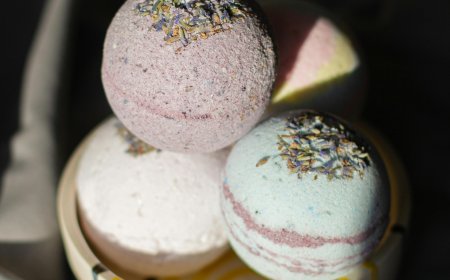5 tips to make your skincare routine more sustainable
The beauty industry is perhaps one of the fastest-growing industries and one that requires you to use a lot of products. From the 10-step skincare routines to trying out single-use products every now and then, people tend to waste more than they can imagine. If your makeup drawer is overflowing with more beauty products that … Continue reading "World Environment Day: 5 tips to make your skincare routine more sustainable"

Finally, people are becoming more concerned and conversant about what goes into their skin routine. If you want to opt for clean beauty or make your skincare routine more sustainable, here are some ways you can do that.
The beauty industry is perhaps one of the fastest-growing industries and one that requires you to use a lot of products. From the 10-step skincare routines to trying out single-use products every now and then, people tend to waste more than they can imagine. If your makeup drawer is overflowing with more beauty products that you use, you might want to take a more sustainable approach now. As it turns out, the kind of beauty products you use can have a huge impact on the environment and planet. Let’s look at some ways you can make your skincare routine more sustainable.
Health Shots asked Dr Renita Rajan, Celebrity Cosmetic Dermatologist and Consultant at RENDER Clinic, Tamil Nadu, to share some easy-peasy tips to make your beauty routine more sustainable.
How to make your skin care routine more sustainable?
Despite the popularity of green and zero-waste cosmetics, not everyone is into creating a more sustainable skin care routine – which is the need of the hour. Plus, making your beauty routine more eco-friendly should be more than just a hashtag on social media. Here’s why it is important and tips by Dr Rajan to make your beauty stash more sustainable:
1. Take a minimalist approach to beauty
The first step should be to reduce the number of beauty products you use every day. The skin has an absorption threshold, so you should focus on addressing one skin goal at a time. Plus, it is never a good idea to add every trending skincare product to your routine. Dr Rajan recommends adding hero ingredients like tranexamic acid to your routine. It helps reduce pigmentation, combats skin sensitivity, reduces both acne and acne spots, and is a great anti-aging option for Indian skin types.
2. Practise sustainable sourcing
For the unversed, sustainable sourcing is the process of choosing supplies after taking social, ethical, and environmental performance considerations into account. This is important because many personal care and cosmetic products (PCCPs) are damaging the environment and several species. A study published in the journal Frontiers revealed that a significant amount of PCCPs contain microplastics as ingredients, which can lead to a rise in marine contamination by microplastics due to the increase in plastic usage across the world.
3. Avoid single-use stuff
Dr Rajan says that one should avoid using single-use beauty products such as sheet masks as they are wasteful and non-biodegradable. A sheet mask has preservatives, is difficult to recycle, and uses a single-use plastic or plastic-lined pouch, all of which are a part of unsustainable behaviour, adds the expert. Choose multipurpose products instead of the ones that are organic and contain non-toxic ingredients.
4. Use natural products
If you are seeking a sustainable skincare routine, you should opt for products that are organic and natural. Choose products that do not contain harsh chemicals, so that you are using less toxic material and are not contributing to the waste. Dr Rajan says if you are unable to eliminate all beauty products from your skincare routine, the least you could do is reduce the use of products that contain microplastics and nonrenewable petrochemical-based products.
5. Choose it right
By choosing glass over plastic, aluminium tubes over lamitubes, you will do the planet a favour. You should also look at the sustainability of the packaging and how much plastic is being used when the product is shipped to you. Did you know shipping involves a fair share of carbon print? So, try to pick products in a single lot or from the local store, recommends the expert.
With these tips and more, you can try to minimise the use of too many beauty products and limit your skincare routine to the products you actually need. Having said that, let’s start by making small changes to make a bigger impact and reduce the damage we have already done to the environment!
What's Your Reaction?
























































































